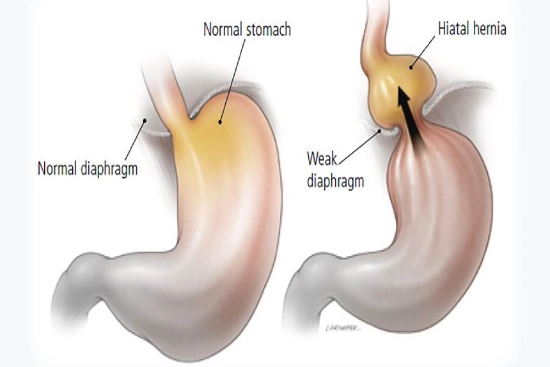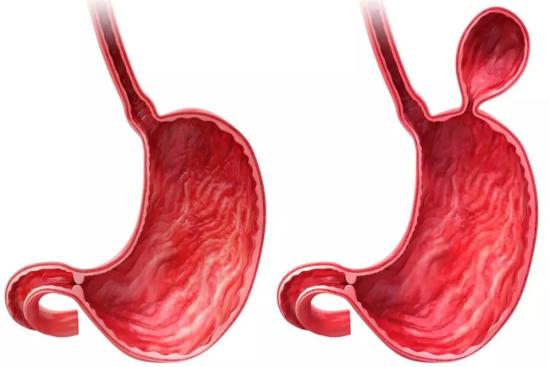Hiatal hernia is the abnormal protrusion of part of the stomach through the hiatus of the esophagus, causing it to protrude into the chest cavity.
- People whose symptoms of gastroesophageal reflux disease (GERD) are severe and do not respond to medication.
- Dysphagia.
- Chest pain.
- Persistent heartburn.
- Damage to nearby organs, especially the spleen.
- Recurrence of hernia.
- Complications related to anesthesia.
- It all depends on the complexity of the hiatal hernia, but generally takes between 1 and 2 hours.
- Hospital stay of 2 to 3 days.
Cost of surgical hiatal hernia repair in Turkey
Do you suffer from persistent acid reflux? Choose surgical excellence in Turkey! Benefit from personalized care for your hiatal hernia, performed by expert surgeons using the most advanced techniques.
You'll have a dedicated team with you from the time you arrive until the time you leave.
The cost of surgical hiatal hernia repair in Turkey is likely to vary depending on the surgical protocol chosen. However, a minimum budget of 8,750 Euros should be expected.
Take advantage of competitive prices and a pleasant stay in Turkey, while regaining an optimal quality of life thanks to a successful operation.
Best Clinics with Verified Reviews

- Multispecialized hospital
- 7 operating rooms
- Capacity é of 170 beds

- Multispecialized hospital
- Hospital founded in 2007
- Very good reputation in ENT department
Types of hiatal hernia
Diaphragmatic hernias are divided into several main types:
- Paraesophageal hernia: is characterized by a displacement of a part of the stomach through the diaphragm upwards towards the chest, which can lead to a stomach rotation.
- Sliding hernia: This is the most common type and is characterized by a portion of the stomach moving back and forth across the esophageal opening in the diaphragm, resulting in an elevated esophagogastric junction.
- Mixed hernia: Combines the characteristics of the previous two types.
Causes of hiatus hernia
Age, especially advanced age, is often associated with the development of hiatal hernia, as are obesity and smoking.
Abdominal hypertension, whether due to pregnancy, chronic pathology or risk factors such as constipation, is a factor that favors the development of hiatal hernia.
In some cases, congenital weakness of the diaphragmatic tissue may be to blame.
Many people with a hiatal hernia have no symptoms.

Most common symptoms
The symptoms of hiatal hernia are varied and may include:
- Heartburn, a common symptom that manifests as a burning sensation traveling from the stomach to the throat.
- Acid regurgitation, with a bitter or sour taste in the mouth.
- Difficulty swallowing, bloating, or feeling full after eating.
- Chest pain.
Some people with hiatal hernia may also experience chronic coughing and frequent belching.
These symptoms may vary from person to person, depending on the size of the hernia and the presence of complications. A medical diagnosis is essential to confirm the presence of a hiatal hernia and to determine the appropriate treatment.
Although rare, a hiatal hernia can develop into a complication requiring emergency surgery: incarceration of abdominal organs in the chest (the stomach becomes wedged in the opening of the diaphragm) and strangulation (the blood supply to the herniated part of the stomach is cut off).
Diagnosis of hiatal hernia in Turkey
In Turkey, the diagnosis of hiatal hernia is based on several complementary tests:
- Barium X-rays visualize the esophagus and stomach and reveal the hernia.
- Endoscopy of the upper digestive tract provides a direct view of the inside of these organs to confirm the diagnosis and evaluate any associated lesions.
- Esophageal manometry measures pressure in the esophagus and assesses the function of the muscles involved in swallowing, while 24-hour pH monitoring measures acidity in the esophagus over time.
In addition to confirming the diagnosis of hiatal hernia, these tests help determine the severity of the lesion and identify any comorbidities.
Diagnosis is essential in order to tailor treatment to the symptoms and severity of the condition.

Hiatal hernia treatment in Turkey
Sliding hiatal hernias are mainly treated medically. If there is associated gastroesophageal reflux, medications to reduce gastric acidity are prescribed.
However, paraesophageal hiatal hernias are usually treated surgically. This is indicated in young patients or those with disabling symptoms. The aim is to correct the anatomical anomaly by returning the stomach to its normal position, closing the hiatus and reinforcing the anti-reflux mechanism with a fundoplication.
This procedure is most often performed laparoscopically, but in certain cases a laparotomy may be necessary.
Paraesophageal hiatal hernia surgery
Before your hiatal hernia surgery, it's important to fast from midnight the night before. This means that you should not eat or drink after this time.
Don't forget to tell your healthcare team about all the medicines you are taking, including those you can buy without a prescription. Some treatments may need to be adjusted or temporarily stopped before surgery.
Operative phase
The surgery is performed under general anesthesia. It involves strengthening the area of your esophagus that does not close properly to prevent acid reflux from your stomach. The surgeon will perform a fundoplication, which is the creation of a sleeve around the esophagus using part of your stomach to protect it.
Postoperative phase
You will be taken to the recovery room, where you will be closely monitored for about 2 hours. Medical devices, such as drains or a nasogastric tube, may be placed to help you recover.
Once you are stable, you will be taken to your room. You will be allowed to stand up gradually and will be encouraged to drink.
Medication will be available for pain, which is usually well controlled.
Convalescence and post-operative follow-up
For optimal healing after hiatal hernia surgery, we recommend a mixed diet for the first two weeks. You can then gradually return to a normal diet.
For follow-up consultations:
- If you do not have endobrachyoesophagus, regular follow-up visits are not usually necessary after surgery.
- If you have endobrachyoesophagus, annual follow-up is recommended to monitor the evolution of this lesion and to adjust the treatment if necessary.
Share this page






